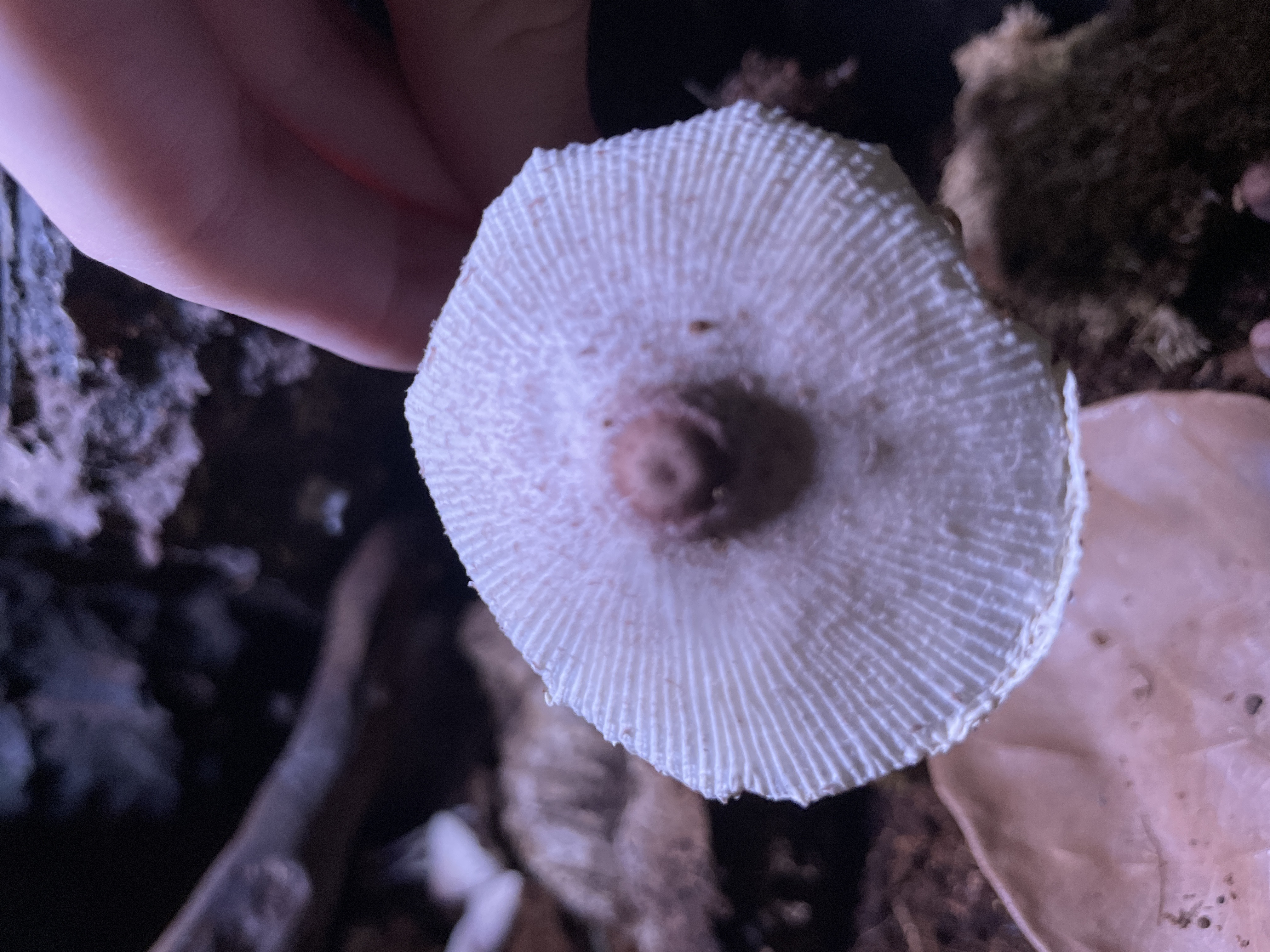Onion-stalk Parasol
Leucocoprinus cepistipes
Identification: Likely Toxic *Leucocoprinus* Species

1 / 4
Toutes les images (4)
Caractéristiques clés
- Cap pale cream to white with deep radial striations
- Distinct
- darker central umbo (nipple)
- Gills white
- crowded
- and free from the stem
- Stem long
- slender
- white
- lacking a visible ring
- Grows on rich organic substrate/soil
Couleur :
Pale cream/white cap and stem; brownish umbo
Odeur :
Unknown
Mode de croissance :
Clustered
Environnement :
Soil/Organic debris
Habitat et distribution
Habitat :
Mulch, potting soil, or rich organic debris
Distribution :
Cosmopolitan (Widespread globally)
Saisonnalité :
Warm months outdoors; year-round indoors
Valeur économique
Demande du marché :
None - toxic
Gamme de prix :
N/A
Usage commercial :
None
Informations sur la toxicité
Symptômes :
- Gastrointestinal distress
- Nausea and vomiting
- Diarrhea
- Abdominal cramps
Délai d'apparition :
30 minutes to 3 hours
Premiers secours :
- Seek immediate medical attention
- Contact poison control immediately
Contacts d'urgence :
- 911 (US)
- Poison Help (US): 1-800-222-1222
Espèces similaires
Stinking Dapperling
Lepiota cristata
Différences clés :
- Cap surface breaks into fine scales
- Often possesses a distinct, movable ring
- Strong, unpleasant, pungent odor
Yellow Houseplant Mushroom
Leucocoprinus birnbaumii
Différences clés :
- Cap and stem typically bright lemon yellow
- Often more robust structure
Amanita species (Small white forms)
Amanita spp.
Différences clés :
- Presence of a volva (sac-like structure) at the stem base
- Gills are consistently white and never free
Action recommandée
Do not handle or consume. Ensure immediate removal from any environment accessible to humans or pets.